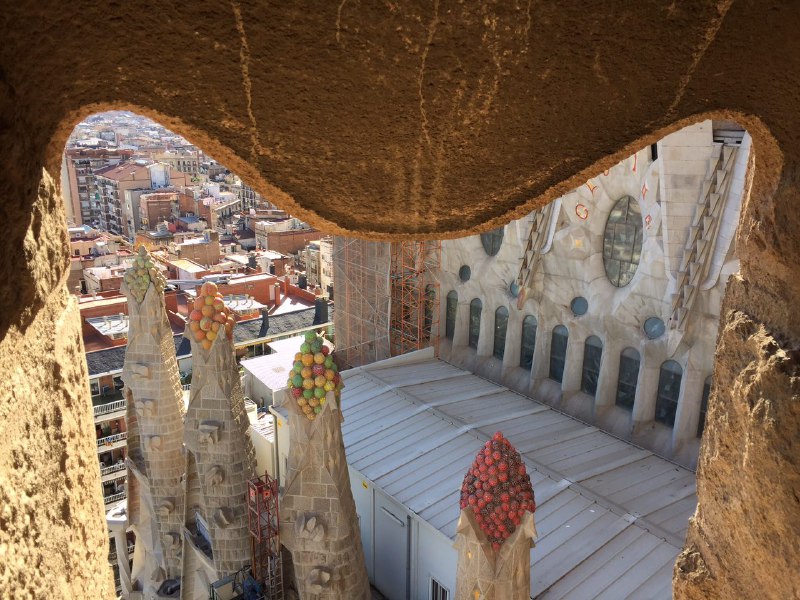Astro-GR@Barcelona 2017 [NOT TRANSLATED]

ASTROPHYSICS, GENERAL RELATIVITY, FUNDAMENTAL PHYSICS and DATA ANALYSIS
from the capture of compact objects by supermassive black holes.
Organised by IEEC (Pau Amaro-Seoane and Carlos F. Sopuerta in Barcelona), at ICE (CSIC-IEEC) from Mon 10/16 – Fri 10/20 2017
Ale_Barcelona_02
Copyright Alejandra Lezcano
The Laser Interferometer Space Antenna (LISA) is the future ESA-NASA Gravitational Wave Observatory. It will look for GW signals in the low-frequency band (0.1 mHz – 1 Hz), mainly from the following sources: galactic binaries, the coalescence and merger of massive black holes in galaxies at cosmological distances, the capture and inspiral of stellar compact objects into massive black holes at galactic centers and even from cosmological stochastic backgrounds.
These observations promise to open a completely new window to the exploration of the Universe, which is expected will have important consequences for our knowledge in astrophysics, cosmology, and fundamental physics. This edition of the Astro-GR meetings will focus again (like the first meeting in the series) on the third source above, (iii), which due to the mass ratio of these binaries they are commonly known as Extreme-Mass-Ratio Inspirals (EMRIs). Considering the possible existence of intermediate-mass black holes, an additional source of gravitational waves for LISA will the inspiral of stellar-mass compact objects into an IMBH or the inspiral of an IMBH into a MBH. These sources, again due to the mass ratio of the binaries, are known as an intermediate-mass ratio inspirals (IMRIs).
Ale_Barna02
Copyright Alejandra Lezcano
These are one of the main sources of gravitational waves expected for LISA and their observations will produce spectacular science. In particular, with EMRI observations we will be able to map isolated black holes with high precision, obtaining very accurate values of their mass, spin, and some gravitational multipoles that will allow us to verify whether they are the stationary solutions predicted by General Relativity and described by the Kerr metric.
We can also try to use these sources to test General Relativity and alternative theories of gravity. In addition, LISA will provide information from hundreds (or even more) of massive black holes from the low redshift Universe (z < 1). This information should allow us to get information of the history of these black holes and from here we could test models of galaxy formation. Moreover, given that LISA will measure precise luminosity distances to these EMRIs, there is the possibility of doing precision cosmology with these sources (correlating the information with galaxy catalogs as has been proposed recently).
The meeting will focus on the following topics:
1. Astrophysical mechanisms that produce EMRI events
2. Astrophysical mechanisms that can produce Intermediate-Mass-Ratio Inspirals (IMRIs)
3. Cosmology and Fundamental Physics with EMRI-IMRI observations
Ale_Barna01
Copyright Alejandra Lezcano
CONFIRMED PARTICIPANTS
Pau Amaro Seoane, Verónica Vázquez Aceves, Ben Bar-Or, Mitch Begelman, Matthew Benacquista, David Neilsen, Aleksey Generozov, Vitor Cardoso, Xian Chen, Marius Oltean, Massimo Dotti, Carlos F Sopuerta, Yu-Peng Zhang, Wlodek Kluzniak, Angela Gardini, Pablo Laguna, Alejandro Torres Orjuela, Anna Lisa Varri, Aleksey Generozov, Naoki Seto, Li Zhao, Eugene Vasiliev, Bence Kocsis, Haris Markakis, Jie Yang, Paula Córdoba Pañella, Andrea Derdzinski, Natalia Korsakova, Wen-Di Guo, Lucio Mayer, Stefan Gillessen, Giacomo Fragione, Hyung Mok Lee, Yu-Xiao Liu, Jan-Willem van Holten, Chris Kavanagh, Václav Pavlík, Eva Noyola, Ofek Birnholtz, Phil Breen, María José Bustamante Rosell, Qun-Ying Xie, Sara Rastello, Camilo Fontecilla, Iara Tosta e Melo, Elisa Bortolas, Xiao Fang, Hyun Lim
Ale_Barna04
Copyright Alejandra Lezcano [NOT TRANSLATED]
